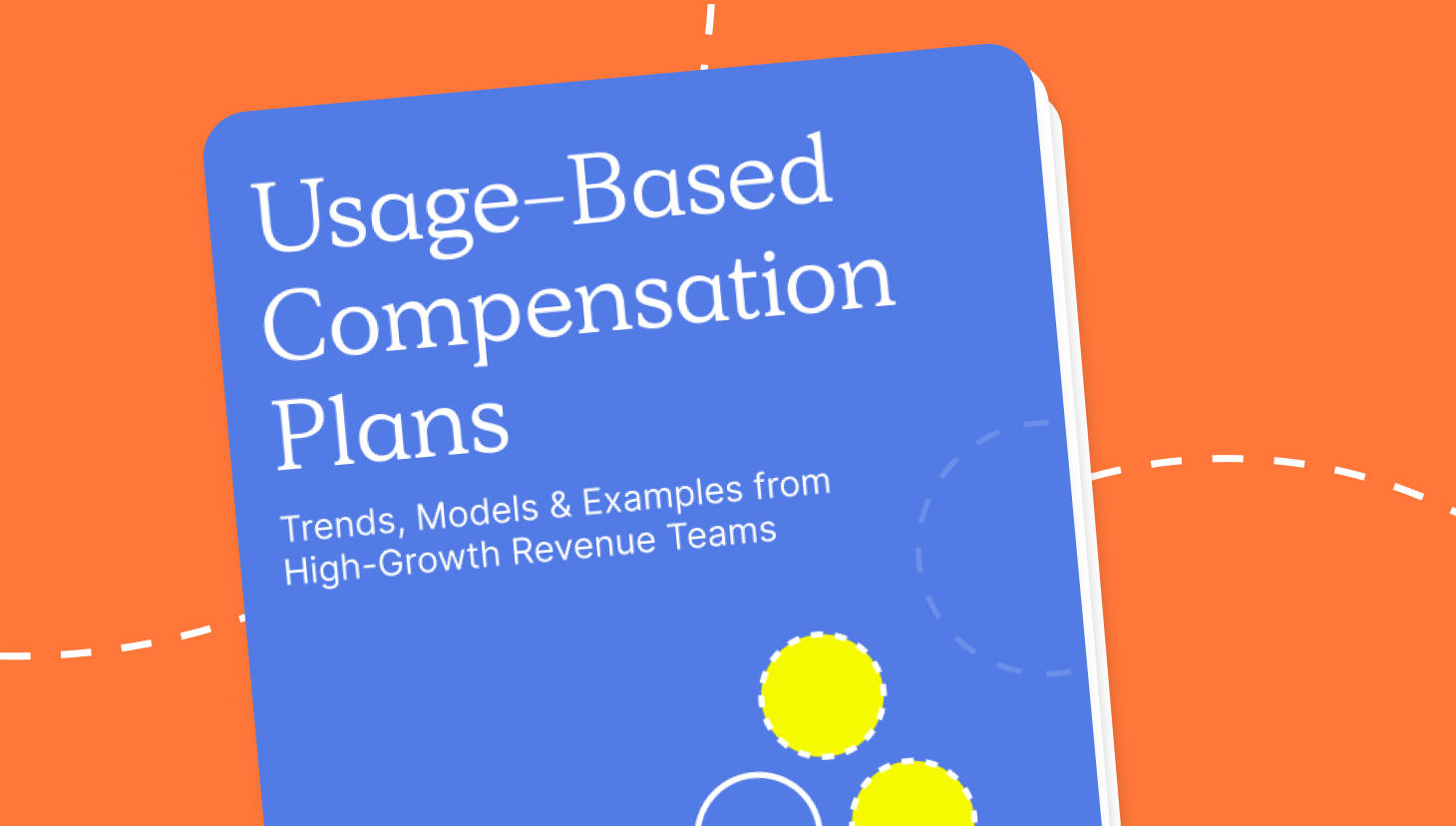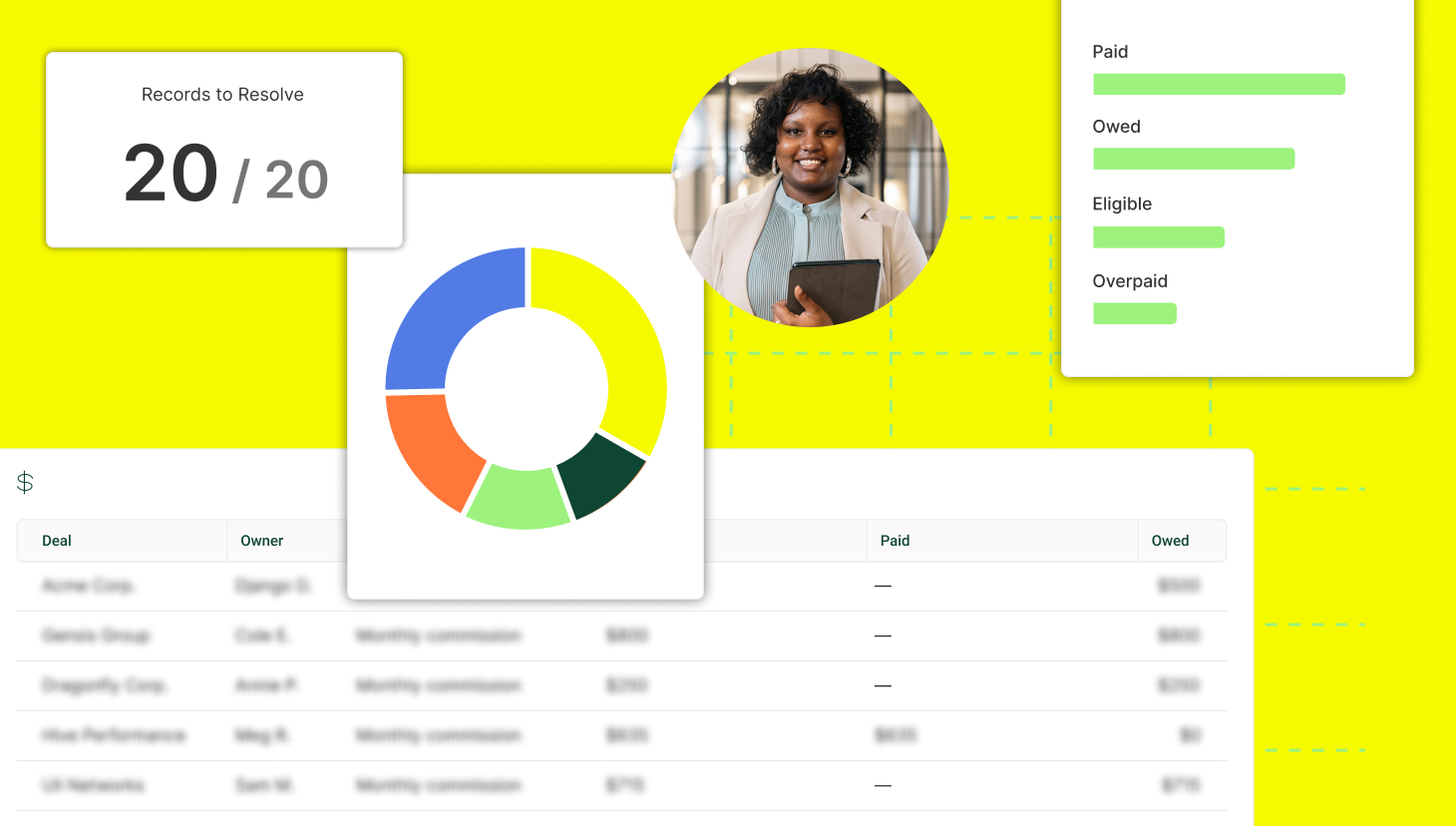The blog below includes 10 best practices and an example compensation communication plan to follow when deploying new plans and adjustments.
It’s mid-year. The sales team has been hitting their goals. Well, until the company rolled out the new compensation plan designed to reward reps for selling new product lines to different market segments. The reps didn’t even realize that the new compensation plan design went into effect as leaders only briefly mentioned the changes during a recent meeting.
But, as reps received their first paycheck on the new plan, the amount on their checks failed to match their expectations. Many reps anticipated commission checks based on the accelerators from the previous plan and at a higher commission rate.
Instead, they saw lower earnings per deal since the new plan doesn’t include the same tiered commission structure.
Reps felt blind-sided, disappointed, and suspicious. They wondered why there wasn’t more of an announcement or, better yet, a dedicated training. This is their paycheck, after all.
Left unchecked, this sort of experience leads to frustration, uncertainty, and poor morale.
Some reps even quit over miscommunication of comp plans.
That’s why it’s essential that leadership formulates a sales compensation communication plan when altering the comp plan or changing quotas.
The plan needs to:
- Include sales-leader-driven workshops to review any changes or adjustments to the plan
- Explain the why behind the changes and the math
- Share how the company will support the team with the new objectives
- Create a safe space for the team to ask questions
To start, read on.
Free Sales Commission Calculator Template
A free spreadsheet to simplify the commission tracking process. Track what you or your team have earned in 4 inputs.
Download Now10 things every sales compensation communication plan should include
1. Use consistent messaging each time you share the plan. This helps avoid confusion and misunderstandings.
2. Leverage various methods to communicate the new plan. This is important because everyone learns differently. You might circulate written documents, a video explaining the plan, example calculations, group presentations, and 1:1 discussions. This increases the odds of understanding the plan and its ramifications for the individual. Plus, the group and individual discussions provide opportunities for reps to ask questions with immediate answers.
3. Start broad and become more detailed. For example, when sharing a new plan with the entire sales organization the messaging will be more general. But as sales leaders present it to a specific sales team, or 1:1 with an individual, the messaging becomes more detailed and specific to the individuals involved.
4. Create a Frequently Asked Questions (FAQs) document. Distribute it alongside the plan documents. Proactively answering these questions saves time and boosts plan understanding more rapidly.
5. Provide calculation examples based on various scenarios. You can incorporate this into the actual plan documents or by providing the sales team with forecasting software that calculates commission amounts for any deal in the pipeline. Offering such a tool answers a multitude of questions and provides clarity around how the new plan impacts everyone’s income potential.
6. Explain why the plan is changing and how the company will back the reps through these changes. When your team understands this it makes it easier to accept the change. When reps know why leadership adjusted a plan and how new resources and enablement will support them, enthusiasm and acceptance will follow.
7. Share the benefits of the new plan. Team members want to understand why they should be excited about the new comp plan and how they can optimize their income on it.
8. Plan documentation should be just the right length. Avoid lengthy comp plan documentation that buries details in a manuscript. But make sure to cover all of the important details. Proper documentation will cover the key points clearly and concisely.
9. Skip the legalese. Don’t get too technical or use a lot of confusing jargon in the plan documentation. It needs to be straightforward and easy to understand. Otherwise, reps may think you are trying to hide something, which decreases their trust in the plan and management.
10. Clearly define how performance ties to reward. You can accomplish this by explaining how you will measure performance, weighted factors, and how to calculate earnings.
An example compensation communication plan
As part of our sales compensation best practices, below we’ve provided a communication plan to adopt and modify.
Step 1 – Educate management
Before rolling out the new comp plan, introduce the plan to all levels of management. Explain all of the elements, why they made the changes, how it impacts the salesforce and whom, and in what ways. Highlight the benefits of the new plan and how to optimize commissions on the new plan. Share plan documents, FAQs, videos, what-if calculators, promo video templates, and any other plan launch materials.
Step 2 – High-level review of the new plan and the roll-out process
Senior management from the salse organization, such as the VP of Sales, should review with the team a high-level review. The strategy is to energize and engage the entire sales organization as they launch the new comp plan. Following the session, send an email to everyone in the sales organization recapping the discussion along with a video reviewing the plan highlights and roll-out process.
Step 3 – More detailed review of the new plan
Next, sales managers should present a detailed review of the plan to their teams. Explain the plan in terms of how it impacts both the team and individual contributors. Distribute detailed plan documents, FAQs, videos, what-if calculators, and other plan launch materials to sales team members for their review.
Step 4 – One-on-one plan review
Then, sales managers meet with each rep on their team to review how the new plan impacts the specific individual. This gives reps the chance to privately ask their questions or raise concerns over the new sales compensation plan. Reps are also provided with the option to present any additional questions via email, private chat, or phone as needed.
Step 5 – Plan verification
Lastly, ask for reps to show they understand their plans by signing off on them. This marks an essential step in creating alignment and transparency across the comp planning process. Leadership should introduce plan verification or re-verification anytime they issue a change to the compensation plan. Complete this by using DocuSign, via email, in person, or by leveraging our in-app Plan Verification feature.
Sales Compensation Calculator
Calculate OTEs, sales quotas, and commission rates to design your sales compensation plans.
Try for FreeCompensation communication plans are critical
It is essential to create a compensation communication plan when designing or altering sales comp plans. The best plan won’t motivate reps or drive desired behaviors if they don’t understand how the plan works. Failing to effectively communicate plan changes and how reps can optimize their income under the new plan, leads to frustration, loss of trust, demotivation, and reps who choose to quit.
To see QuotaPath’s Plan Verification feature and streamline your compensation communication plan, schedule a custom demo with our team.
Interested in some of our other free resources? Check them out:



